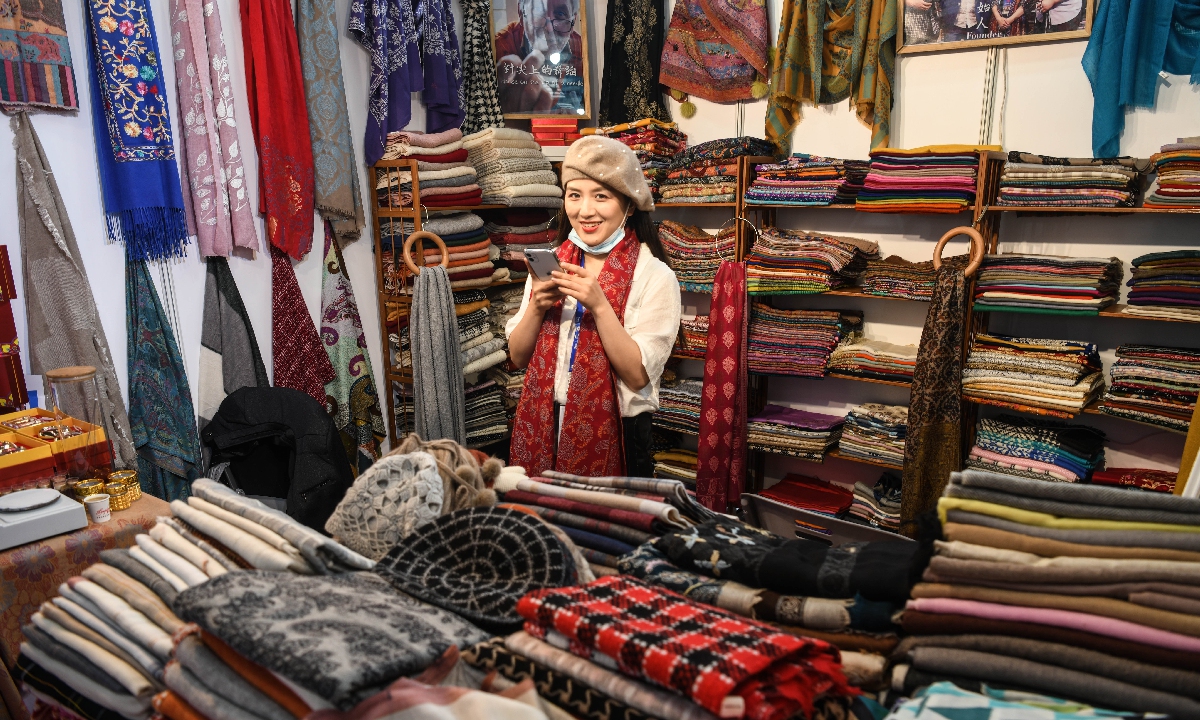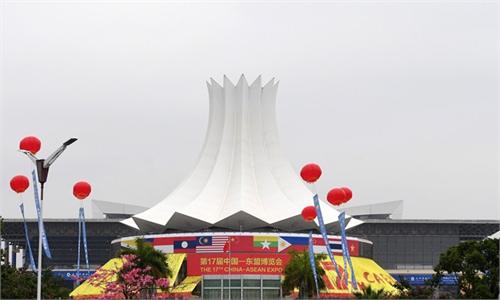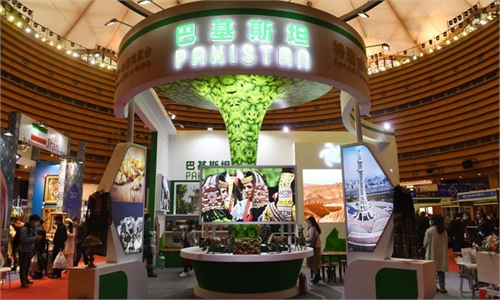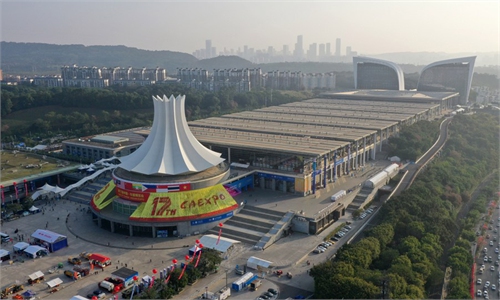Foreign Minister’s visit to SEA countries to promote deeper cooperation, build on relations: expert
Enhanced relations, stronger cooperation focused on BRI to be expected: expert

A vendor stands at a stall at the China-ASEAN Exposition in November in Southwest China's Guangxi Province. Photo: IC
China's Foreign Minister Wang Yi has embarked on a four-nation tour of Southeast Asia immediately after finishing his tour in Africa at the beginning of the New Year that marks the 30th anniversary of China-ASEAN dialogue relations.
From between Monday to Saturday, Wang will make official visits to Myanmar, Indonesia, Brunei and the Philippines on invitations.
Top level bilateral meetings are important in affirming the continued strengthening of bilateral relations in all aspects, Glenn G. Penaranda, Special Trade Representative and Commercial Counselor at the Embassy of the Philippines in Beijing, told the Global Times on Monday.
"China is our largest trading partner and major source of investment, the visit will be an opportunity to highlight this relationship and to promote even deeper cooperation," Penaranda said.
China on Sunday published a white paper addressing the country's international development cooperation, vowing to push forward the Belt and Road Initiative (BRI), support developing countries to strengthen their own ability to develop their economies, while also working together to tackle international humanitarian challenges.
By reaffirming a commitment to promoting a global community with a shared future, the white paper also stresses that South-South cooperation is a key priority, with the Belt and Road cooperation acting as a major platform.
The Foreign Minister's visit to the four Southeast Asian countries highlighted the necessity and significance for China to build on key relationships with other developing countries, strengthen BRI cooperation and expanding economic and trade relations in the face of the COVID-19 and global economic downturn, said Shen Minghui, secretary-general of the Center for APEC and East Asian Cooperation with the Chinese Academy of Social Sciences.
BRI bucks the trend
Since the BRI was proposed, China has initiated projects focused on development cooperation and contributed to infrastructure, trade, financial and people-to-people connectivity based on the needs of individual countries.
Penaranda said the Philippines appreciates China's support across projects which are intended to enhance connectivity in the country.
"As a country along the Belt and Road, the Philippines has extensive cooperation with China in the BRI in recent years. At the same time, the 'Build, Build, Build' flagship infrastructure development program of the Philippines will create more opportunities for cooperation between the Philippines and China," Penaranda noted, adding the two countries can work together to promote the construction of the Belt and Road in third countries in the future.
Even though COVID-19 has dealt a heavy blow to the world economy and has created challenges for the Belt and Road cooperation, "cooperation under the BRI has bucked the trend to make new progress. It has demonstrated a strong resilience," Wang said in an interview with Chinese media on December 31, 2020.
For example, the Silk Road in the Air has enabled shipments of more than 1,700 tons of medical supplies from China, opening up a lifeline in the air. In the first three quarters of 2020, China's non-financial direct investment in countries along the Belt and Road reached $13 billion, an increase of nearly 30 percent year-on-year, according to Wang.
High expectations on RCEP
When coronavirus is still wreaking havoc worldwide, China and ASEAN countries came to each other's need and take lead in recovering regional economy.
"We helped turn East Asia into an example in the global fight against the virus and an early bird in achieving economic recovery," Wang pointed out in the interview.
With the ink of the Regional Comprehensive Economic Partnership (RCEP), Chinese commerce ministry said on Thursday it is pushing forward the early implementation of the trade pact.
The Philippines aims to ratify the RCEP within 2021, according to Penaranda.
Nick Koay, chairman of the Malaysian Chamber of Commerce and Industry in China, Greater Bay Area, said the RCEP may attract more countries outside the trade zone to invest in the 15 countries under the deal in order to better supply the huge markets.
"I also hope more countries could join the world's largest trade zone in future to build it even bigger and better," Koay told the Global Times.
Based on current division of labor in markets of Southeast Asia, Shen suggested a more resilient supply chain system could be established between ASEAN countries and China.
More and more Southeast Asian countries are becoming labor intensive and focusing on assembling and processing; while China now is shifting toward the end of value chain and producing more semi-finished products and components such as in auto and electronics industries, he noted.
"As a result, based on market division of labor, legal protection and institutional assurance would be much needed to guarantee investments and trade could proceed smoothly," Shen suggested, noting this could be a future direction under the BRI framework.
He also encouraged more medical suppliers to set up plants in Southeast Asia, in order to grow the local public health sector.





